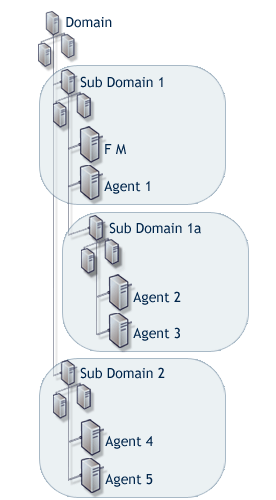8.2 Load Balancing
Load balancing means the ability to evenly distribute processing and communications activity across the Framework so that no single Framework Manager is overwhelmed by agent requests.
Load balancing is particularly important in situations where it is difficult to predict the number of requests that are directed to a specific category of manager.
The Framework automatically replicates data from the defined primary manager to each additional manager that is deployed in the Framework. Replication takes place automatically when the manager is initially deployed and then again at any stage when the data on the primary manager is modified.
The following packages can be load balanced:
-
Registry Manager: Maintains a database of all hosts and modules and provides certificate-based registration features for the hosts.
-
Package Manager: Manages a repository for packages.
-
Administration Agent: Provides the functionality for the Web-based user interface. Consoles can be installed on the Administration Agent and used to control product features.
-
Access Manager: Maintains a list of Framework user accounts and provides authentication services for the Framework. This package must be installed with a local Registry Manager in order to create a secure user authentication token.
-
Command Control Manager: Maintains a database of all defined command control rules, commands, and scripts.
Table 8-2 Creating a Load Balancing Environment
